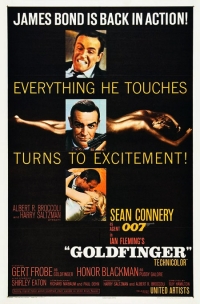“Only Sean Connery in 1964 could pull off wearing a baby-blue terrycloth onesie and still make every woman in the audience breathe a little more deeply and every man want to be him.” — John Cork
The Digital Bits is pleased to present this retrospective commemorating the golden anniversary of the release of Goldfinger, the classic James Bond adventure starring Sean Connery as Agent 007 and directed by Guy Hamiton. Featuring an unforgettable villain, unforgettable sidekick, unforgettable gadgets, and a Bond Girl with an unforgettable name, Goldfinger, which premiered in London 50 years ago today, delighted audiences becoming the first Bond film to be a global phenomenon, ensuring more 007 films for decades to come. [Read more here...]
As with our previous 007 article, The Bits celebrates the occasion with this retrospective featuring a Q&A with an esteemed group of James Bond authorities. The interviews were conducted separately and have been edited into a “roundtable” conversation format.
Okay, let’s (alphabetically) meet the participants…
Jon Burlingame is the author of The Music of James Bond (Oxford University Press, 2012; and recently issued in paperback with an updated Skyfall chapter). He also authored Sound and Vision: 60 Years of Motion Picture Soundtracks (Watson-Guptill, 2000) and TV’s Biggest Hits: The Story of Television Themes from Dragnet to Friends (Schirmer, 1996). He writes regularly for the entertainment industry trade Variety and has also been published in The Hollywood Reporter, Los Angeles Times, The New York Times, and The Washington Post. He started writing about spy music for the 1970s fanzine File Forty and has since produced seven CDs of original music from The Man from U.N.C.L.E. for the Film Score Monthly label.
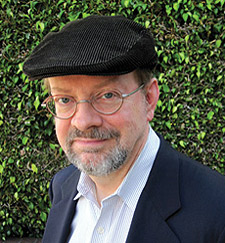

Robert A. Caplen is an attorney and the author of Shaken & Stirred: The Feminism of James Bond (Xlibris, 2010). Based in Washington, DC, he practices antitrust and commercial litigation and has published numerous law review articles in leading academic journals. Shaken & Stirred: The Feminism of James Bond (which was quoted in Sir Roger Moore’s memoir, Bond on Bond) is his first book. He is working on a follow-up book and can be reached via Facebook (www.Facebook.com/bondgirlbook) and Twitter (@bondgirlbook).
James Chapman is a Professor of Film Studies at the University of Leicester and is the author of Licence to Thrill: A Cultural History of the James Bond Films (Tauris, 2007). His other books include Inside the Tardis: The Worlds of Doctor Who—A Cultural History (Tauris, 2006), Saints and Avengers: British Adventure Series of the 1960s (Tauris, 2002), and (with Nicholas J. Cull) Projecting Empire: Imperialism and Popular Cinema (Tauris, 2009). Chapman is also a Council member of the International Association for Media and History and is Editor of the Historical Journal of Film, Radio and Television.

John Cork is the author (with Bruce Scivally) of James Bond: The Legacy (Abrams, 2002). He also wrote (with Maryam d’Abo) Bond Girls Are Forever: The Women of James Bond (Abrams, 2003) and (with Collin Stutz) James Bond Encyclopedia (DK, 2007). He is the president of Cloverland, a multi-media production company, producing documentaries and supplemental material for movies on DVD and Blu-ray, including material for Chariots of Fire, The Hustler, and many of the James Bond and Pink Panther titles. Cork also wrote the screenplay to The Long Walk Home (1990), starring Whoopi Goldberg and Sissy Spacek. He recently wrote and directed the feature documentary You Belong to Me: Sex, Race and Murder on the Suwannee River for producers Jude Hagin and Hillary Saltzman (daughter of original Bond producer, Harry Saltzman); the film is now touring festivals.

Bill Desowitz is the author of James Bond Unmasked (Spies, 2012); and updated for Kindle which includes a chapter on Skyfall and exclusive interview with Sam Mendes). He is the owner of Immersed in Movies, a contributor to Thompson on Hollywood at Indiewire and contributing editor of Animation Scoop at Indiewire. He has also contributed to the Los Angeles Times and USA Today.

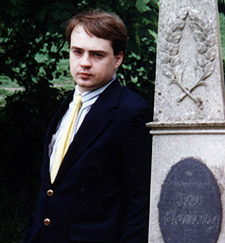
Charles Helfenstein is the author of The Making of On Her Majesty’s Secret Service (Spies, 2009) and The Making of The Living Daylights (Spies, 2012).
Mark O’Connell is a punditeer (his word) and the grandson of Bond producer Cubby Broccoli’s chauffeur. With a Prelude by Barbara Broccoli and Foreword by Mark Gatiss, his book Catching Bullets: Memoirs of a Bond Fan (Splendid Books, 2012) is a gilded, unique account of growing up as a Bond fan. He is working on his second book and can be found online here.

Lee Pfeiffer is the author (with Philip Lisa) of The Incredible World of 007: An Authorized Celebration of James Bond (Citadel, 1992) and The Films of Sean Connery (Citadel, 2001), and (with Dave Worrall) The Essential Bond: The Authorized Guide to the World of 007 (Boxtree, 1998/Harper Collins, 1999). He also wrote (with Michael Lewis) The Films of Harrison Ford (Citadel, 2002) and (with Dave Worrall) The Great Fox War Movies (20th Century Fox Home Entertainment, 2006). Lee was a producer on the Goldfinger and Thunderball Special Edition LaserDisc sets and is the founder (with Dave Worrall) and Editor-in-Chief of Cinema Retro magazine, which celebrates films of the 1960s and 1970s and is “the Essential Guide to Cult and Classic Movies.”

Steven Jay Rubin is the author of The James Bond Films: A Behind-the-Scenes History (Random House, 1981) and The Complete James Bond Movie Encyclopedia (McGraw-Hill, 2002). He also wrote Combat Films: American Realism, 1945-2010 (McFarland, 2011) and has written for Cinefantastique magazine.
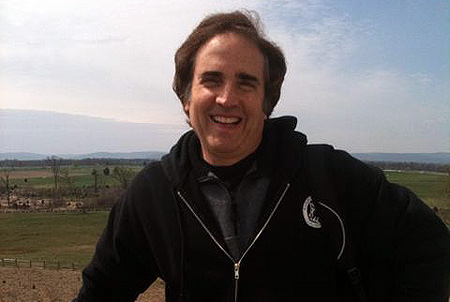
Bruce Scivally is the author (with John Cork) of James Bond: The Legacy (Abrams, 2002). He has also written Superman on Film, Television, Radio & Broadway (McFarland, 2006), Billion Dollar Batman: A History of the Caped Crusader on Film, Radio and Television from 10¢ Comic Book to Global Icon (Henry Gray, 2011), and the forthcoming Dracula FAQ. As well, he has written and produced numerous documentaries and featurettes that have appeared as supplemental material on LaserDisc, DVD and Blu-ray Disc, including several of the Charlie Chan, James Bond, and Pink Panther releases. He teaches screenwriting, film production and cinema history and theory at The Illinois Institute of Art–Chicago and Columbia College.

And now that the participants have been introduced, might I suggest cueing up the Goldfinger soundtrack album and preparing a martini (shaken, not stirred, of course), and then enjoy this conversation with these James Bond authorities.
---
Michael Coate (The Digital Bits): In what way is Goldfinger worthy of celebration on its 50th anniversary?
Jon Burlingame: I have always agreed with composer John Barry that Goldfinger is the Bond film “where it all came together”: the style, the song, the score. I think From Russia with Love and Goldfinger mark the high points of 60s Bond, with Goldfinger lightening the mood just a bit, finding the right balance between suspense, danger, fascinating characters and humor. Gert Frobe and Honor Blackman played worthy adversaries for Sean Connery’s 007, and John Barry’s bold, brassy score tied it all together. It’s hard to imagine a more entertaining, satisfying 007 adventure.
Robert A. Caplen: The third film in Eon Productions’ franchise, Goldfinger marked a conscious effort by Albert R. “Cubby” Broccoli and Harry Saltzman to tailor James Bond to American audiences. The first James Bond film to be classified as a box office blockbuster, Goldfinger is noteworthy for redefining cinematic success: it became the fastest-grossing film for its time. It also was groundbreaking for its special effects. Goldfinger became the first film to showcase a laser as part of the plot. And no other image has become as recognizable as Shirley Eaton’s “golden girl,” which offered audiences a new aesthetic for fetishizes sex objects.
There is no question that Goldfinger is deserving of celebration fifty years after its release. The film is equally entertaining today as it was in 1964, and the commentary it offers of social mores—and the portrayals of women—remains highly relevant.
James Chapman: While Goldfinger wasn’t the first James Bond movie, it was the one that really marked the breakthrough for Bond as a cultural phenomenon and ensured the longevity of the series. The first two films, Dr. No and From Russia with Love, had been big hits in Britain and Europe, but Goldfinger was the first really to score big at the US box office as well. This might be attributed to the film’s predominantly US setting (though a lot of the locations, including the attack on Fort Knox, were shot at Pinewood Studios in England) and the fact that the conspiracy is directed against the United States.
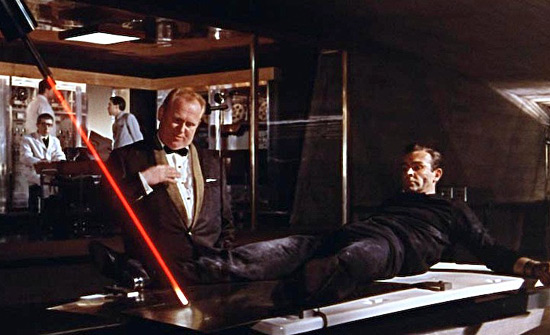
It was also the success of Goldfinger that kick-started the spy craze of the 1960s. There hadn’t been many Bond imitations following the first two movies—the only one I can think of is the spoof Carry On Spying—but after Goldfinger the floodgates opened with the Derek Flint and Matt Helm films and The Man From U.N.C.L.E., Get Smart, I Spy and Mission: Impossible on television, not to mention the revamp of The Avengers (which began in 1961 and had starred a pre-Pussy Galore Honor Blackman) which became more fantasy-oriented with its fourth series. So it was Goldfinger that really got the whole Sixties spy/secret agent cycle under way.
John Cork: Goldfinger is always worth celebrating! It doesn’t matter if it is the 3rd anniversary or the 150th. The film rocks. There are many great villains, but I would argue that there is no greater criminal villain in film than Goldfinger. Henchmen? Would anyone even want to claim that there is a better henchman than Oddjob? Nah. And it is not too much to say that no female character in cinema history had ever confounded more teachers and parents than Pussy Galore. Best car in a movie? The Aston Martin DB5, hands down. It is a brilliant, funny, sexy, clever and satisfying film on every level.
Bill Desowitz: Goldfinger was the game-changer for Bond and the first modern tent-pole. It was an instant blockbuster and influenced pop culture, spawning Bond mania and then spy mania. Everything was grander, more lavish and elevated, from the action to the humor to the greater physicality of Bond to the pacing to the self-reverential attitude of Bond. Plus there was Ken Adam’s fantastical design, the greedy super villain and his deadly henchman, Oddjob; the sexy and powerful Bond girl, Pussy Galore; the stunning John Barry score and Shirley Bassey’s wild title song; and the introduction of the best gadget of them all, the tricked out Aston Martin DB5. The new director, Guy Hamilton, made it more a Bond movie than a spy movie, in which we follow his POV with one obstacle course after another for Bond to get out of. This became the Bond template.
Charles Helfenstein: It is the perfect encapsulation of what makes James Bond so great. The film has everything you can want in a Bond film: a great teaser sequence, iconic imagery with girls painted in gold, an ambitious villain, an indestructible henchman, a tricked out car, an incredible soundtrack, and in the middle of all this is Sean Connery, playing Bond with a casual, bemused cool that personifies the old Etonian ethos of “Effortless Superiority.”

